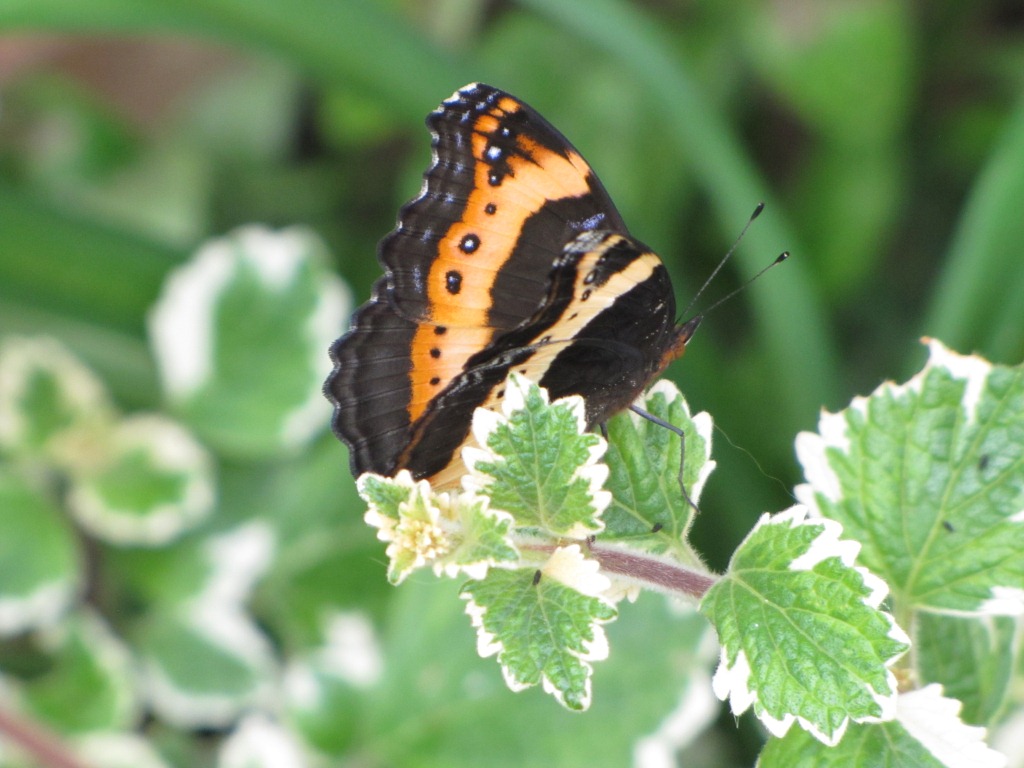I’ve been busy with plenty of office work and life events which are difficult to express. So time for a different perspective. The year 2013 has been nothing if not interesting. I have had to face some gargantuan questions and challenges. While facing these challenges head on, I have had many moments both of ecstasy and of troubling wobbles. So while this kind of business doesn’t provide the most compelling blog posts, I thought a nature-oriented metaphor could
Metamorphosis
A wonderful transition that the sluggish, legged-worm creatures we call caterpillars take on their journey in life to being bright, expressive, often gaudy, creatures of flight. The ancient Greeks used the word Psyche, meaning soul (now mind)
To put it in context, let’s start with a little bit of homework. The first 20 years of my life, in New Zealand, was spent in great ignorance of butterflies and moths. Later, with a couple of years of entomology courses at Massey University, I learned that NZ’s Lepidoptera diversity bears such resemblance to other groups of animals on this long isolated, remote, south pacific land. The butterfly diversity is particularly embarrassing with only 13 native species, however the remaining 1800 species are of moths, with a very high endemism of about 90%. Moths though are mostly covert and camouflaged creatures of the night
South Africa in contrast, is a place of mind-blowing diversity for a humble Kiwi. There are 666 species of butterfly, and further, there are more than this number of brightly-colored day-flying moths alone, with a wild estimate of some total of 10,000 species of moths
So I have given them much appreciation and paid some glancing attention of the butterflies and moths while out at my eagle sites. Summer has been a wonderful spectacle of emergence
Having delved into my collection of photos from this year gone, I’ve found a few nice photos to share here. I’ve also added one or two of Glen McLean’s photos, who has helped identify some of these species, and is making a good start to developing a digital collection of the butterflies of South Africa. Maybe in coming years I’ll be seen wandering gardens with my butterfly net and camera
Take a look at the website of the Lepidoptera Society of South Africa, the home page has a magnificent photostream
The ADU’s Virtual Museum is a depository and citizen science project of digital specimens of all types of wildlife. And submitting digital butterfly specimens will contribute to the SABCA, a joint project of Lepsoc, ADU and SANBI to revise the Atlas of SA butterflies distribution and conservation status
 |
| stunning and very large caterpillars of the emperor moth |
 |
| unexpectedly touching hairy caterpillars is an uncomfortable experience |
.JPG) |
| the metamorphosis is so extreme there is no way to tell what this will look like as an adult. photo G McLean |
 |
| despite widespread and such obvious aposematism, cuckoo's thrive eating caterpillars. photo G McLean |
 |
| this species is extremely toxic to touch, it looks as dangerous as a nudibranch! photo G McLean |
 |
| one of the vivid day flying moths of the superb moth family |
 |
| possible Black Pie |
 |
| Brown-veined White |
 |
| False Dotted Boarder (one of the Whites) |
 |
| the boring underside of the beautiful Green-banded Swallowtail |
 |
| a male Mocker Swallowtail. females have a variety of mimetic patterns of the monarch group, hence 'mocker' |
 |
| Orange Tip. photo G McLean |
 |
| Common Mother-of-Pearl. one of SA's showiest butterflies. |
 |
| Brown Pansy |
 |
| White-barred Acraea. a close muellerian mimic of the african monarch. this haggard one is 'mud-puddling' |
 |
| either a Smokey Blue or Ant Blue species. Ant Blues so named because their larvae live in ants' nests |
 |
| summer form of the Garden Commodore, also called Garden Inspector. |
 |
| likely a Speckled Red Acraea. with the dark forewing veins either atypical form or another species |

No comments:
Post a Comment